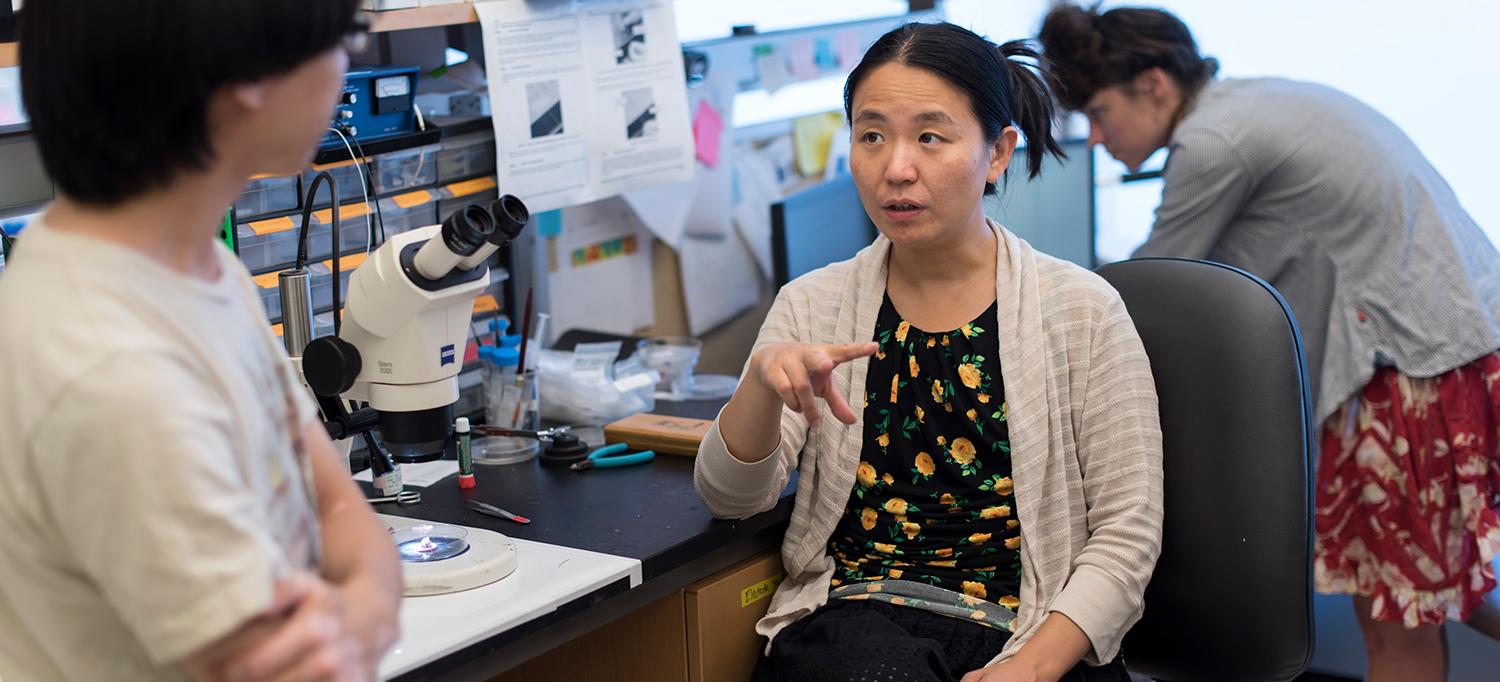
A study shows how a maternal instinct is generated by brain cells that make the chemical dopamine.
Photo: NYU Langone Staff
A mother’s “basic instinct” to grab her wandering offspring and return them to the nest depends on a specific set of brain cell signals, a new study in mice finds.
Reporting in the journal Neuron online April 4, NYU School of Medicine scientists traced the roots of this behavior to brain cells that make the signaling chemical dopamine, release of which is known to create feelings of satisfaction.
“Our study shows precisely how a maternal instinct is generated in the mammalian brain,” says study senior investigator Dayu Lin, PhD, an assistant professor at the Neuroscience Institute at NYU Langone Health.
Dr. Lin says that because evolution has conserved biochemistry in most mammals, the findings may help to explain human maternal behaviors, such as breastfeeding and rocking a newborn, and could suggest new ways to help new mothers who have trouble nursing or bonding with their infants.
“Moreover, we believe that the findings overturn the longstanding idea that the dopamine system produces a ‘rush’ after a good behavior, and argue instead that dopamine may drive actions before any satisfaction is felt,” says Dr. Lin.
For the study, researchers monitored brain activity in dozens of female mice as they interacted with their own and others’ pups. The research team focused on a region near the front of the brain called the medial preoptic area (MPOA), which previous work had shown was key to pup retrieval in mother mice.
Tests showed that among the millions of cells in this brain region, the few that had a signaling protein on their surfaces called estrogen receptor alpha expressing (MPOA Esr1) were the most active electrically when mothers located and then brought their pups back to the nest. This activity dropped once the pups were returned.
Chemically stimulating hundreds of thousands of these cells at once triggered mother mice to immediately pick up their pups. Even virgin mice would retrieve pups that were not theirs when these cells were artificially turned on. When researchers chemically blocked activity in these cells, all retrieval efforts stopped.
Looking for other regions of the brain supporting this instinctual behavior, the researchers traced extensions, or axons, of MPOA Esr1 nerve cells to another brain region, the ventral tegmental area (VTA), where dopamine is produced. Previous research, Dr. Lin says, had shown that chemically blocking cells in the VTA impaired retrieval behaviors. In the new study, researchers found that stimulating MPOA Esr1 axons that projected to the VTA of mother mice led—within seconds—to pup retrieval. And brain recordings in new mother mice confirmed that these MPOA Esr1 cells were active when these mice gathered their offspring.
Dr. Lin says her team next plans to study what changes occur in mothers’ brains to sensitize them to their pups in the time between pregnancy and lactation, when MPOA Esr1 cells become most active. They also plan to investigate what if any similar actions occur in the brains of father mice, whose aggressive behavior toward pups is known to cease for a short period of time around birth.
Funding support for the study, which took five years to complete, was provided by National Institutes of Health grants R00 NS087098, DP2 NS105553, R01 MH101377, R21 MH105774, and R21 HD090563. Additional funding support was provided by the Ester A. and Joseph Klingenstein Fund, Whitehall Foundation, Sloan Foundation, Mathers Foundation, and McKnight Foundation.
Besides Dr. Lin, other NYU Langone scientists involved with this research are Yi-Ya Fang, PhD; Takashi Yamaguchi, PhD; Soomin Song, PhD; and Nicolas Tritsch, PhD.
Media Inquiries
David March
Phone: 212-404-3528
david.march@nyumc.org
